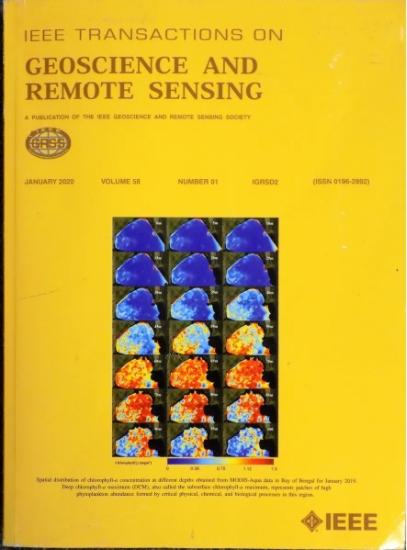Intelligent Recognition of GPR Road Hidden Defect Images Based on Feature Fusion and Attention Mechanism
IF 8.6
1区 地球科学
Q1 ENGINEERING, ELECTRICAL & ELECTRONIC
IEEE Transactions on Geoscience and Remote Sensing
Pub Date : 2025-03-30
DOI:10.1109/TGRS.2025.3575293
引用次数: 0
Abstract
Ground penetrating radar (GPR) has emerged as a pivotal tool for nondestructive evaluation of subsurface road defects. However, conventional GPR image interpretation remains heavily reliant on subjective expertise, introducing inefficiencies and inaccuracies. This study introduces a comprehensive framework to address these limitations: 1) a DCGAN-based data augmentation strategy synthesizes high-fidelity GPR images to mitigate data scarcity while preserving defect morphology under complex backgrounds; 2) a novel multimodal chain and global attention network (MCGA-Net) is proposed, integrating multimodal chain feature fusion (MCFF) for hierarchical multiscale defect representation and global attention mechanism (GAM) for context-aware feature enhancement; and 3) MS Common Objects in Context (COCO) transfer learning fine-tunes the backbone network, accelerating convergence and improving generalization. Ablation and comparison experiments validate the framework’s efficacy. MCGA-Net achieves precision (92.8%), recall (92.5%), and mAP@50 (95.9%). In the detection of Gaussian noise (基于特征融合和注意机制的GPR道路隐藏缺陷图像智能识别
探地雷达(GPR)已成为地下道路缺陷无损评价的重要工具。然而,传统的探地雷达图像解释仍然严重依赖主观专业知识,导致效率低下和不准确。本研究引入了一个全面的框架来解决这些局限性:1)基于dcgan的数据增强策略综合了高保真GPR图像,以减轻数据稀缺性,同时保留复杂背景下的缺陷形态;2)提出了一种新的多模态链和全局关注网络(MCGA-Net),将多模态链特征融合(MCFF)用于分层多尺度缺陷表示,全局关注机制(GAM)用于上下文感知特征增强;3) MS Common Objects in Context (COCO)迁移学习对骨干网进行微调,加速收敛和提高泛化。烧蚀实验和对比实验验证了该框架的有效性。MCGA-Net达到了准确率(92.8%)、召回率(92.5%)和mAP@50(95.9%)。在高斯噪声($\sigma =25$)、弱信号和小目标的检测中,MCGA-Net保持了鲁棒性,优于其他模型。这项工作为基于gpr的自动化缺陷检测建立了一个新的范例,在复杂的地下环境中平衡了计算效率和高精度。
本文章由计算机程序翻译,如有差异,请以英文原文为准。
求助全文
约1分钟内获得全文
求助全文
来源期刊

IEEE Transactions on Geoscience and Remote Sensing
工程技术-地球化学与地球物理
CiteScore
11.50
自引率
28.00%
发文量
1912
审稿时长
4.0 months
期刊介绍:
IEEE Transactions on Geoscience and Remote Sensing (TGRS) is a monthly publication that focuses on the theory, concepts, and techniques of science and engineering as applied to sensing the land, oceans, atmosphere, and space; and the processing, interpretation, and dissemination of this information.
 求助内容:
求助内容: 应助结果提醒方式:
应助结果提醒方式:


